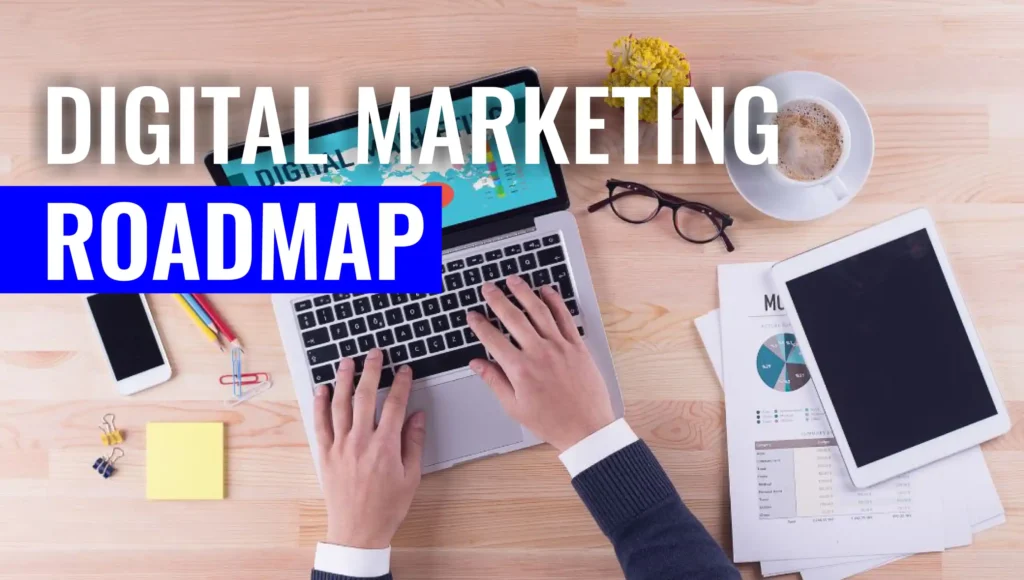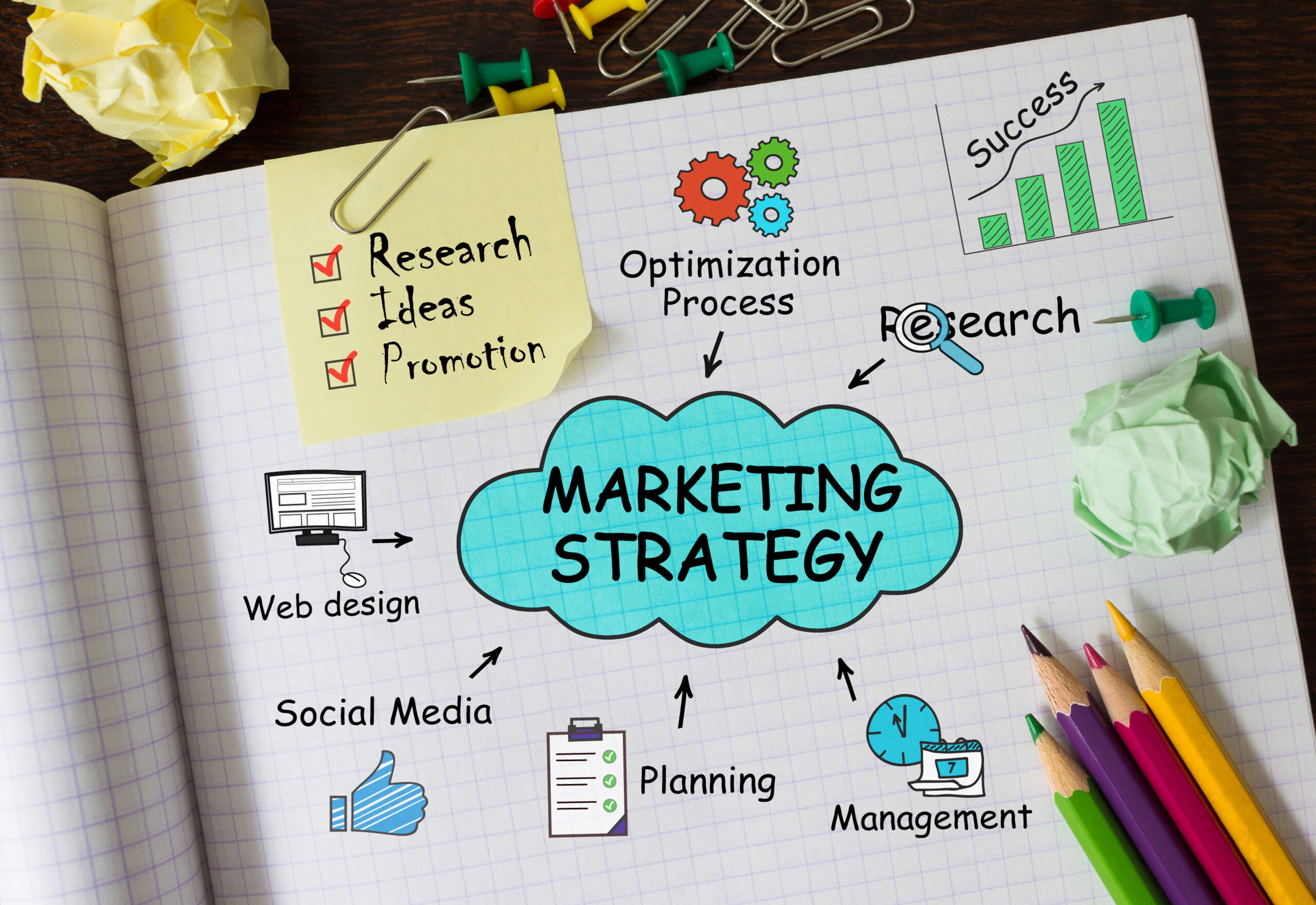Digital Marketing Roadmap
Digital marketing has become an integral part of the new business revolution. It has transformed the business landscape immensely, providing all kinds of businesses, new opportunities to connect with potential customers.
A digital marketing roadmap acts like a path or clear route towards success, helping your business or you to navigate through the complicated field of online strategies and tactics. Whether you are a beginner or want to fine-tune your existing strategy, you need to know the steps in the digital marketing roadmap. A bullet-proof digital marketing roadmap for beginners That will guide you through the jungle of digital marketing.
What is a Digital Marketing Roadmap?
A digital marketing roadmap is a strategic outline of the way to accomplish your advertising desires and the usage of virtual channels. It is a guide to help you keep your marketing activities in line with your business goals, making sure you are doing the right things with the right tools and tactics.
This may feel overwhelming the first time you get started with digital marketing. There are many techniques, platforms, and tools, and it can be a lot to decide where to pay attention. But by having a clear plan you are breaking the process into easily manageable steps. It makes sure that you are not working with some time pass or money-draining strategies.
Digital marketing roadmaps can help you ensure that your digital marketing efforts have structure and measurability, and deliver results. In the corporate world, whether you want to promote your brand, gather leads, or sales, a roadmap helps you in the entire process. This meticulous routine is very helpful for beginners in digital marketing.
The Importance of Having a Digital Marketing Roadmap for Beginners
If you are new to digital marketing, a digital marketing roadmap for beginners is essential. It keeps you from hopping from tactic to tactic without a specific focus or direction. The roadmap provides you with a methodology to learn and implement step-by-step a process of digital marketing that is results-driven.
A clear roadmap provides a solid footing on which to build. You will discover how to research your target market, determine the most effective digital marketing channels for your business, and develop compelling material that connects with your audience. An effective roadmap is your ticket to avoiding dumb mistakes while being able to focus your energy on what actually works.
Tracking and analyzing the results is an anchoring part of roadmap marketing. Measuring the results of your marketing efforts consistently allows you to improve and optimize along the way. This is where a data-driven approach comes in—it gives you always an opportunity to improve and optimize your campaigns.
This table provides a clear, hierarchical breakdown of the different types of digital marketing and their relevant subcategories.
| Digital Marketing Type | Subcategories |
|---|---|
| Search Engine Marketing (SEM) | – Search Engine Optimization (SEO) – On-Page SEO – Off-Page SEO – Technical SEO – Paid Search Advertising (PPC) – Google Ads – Bing Ads – Retargeting/Remarketing |
| Content Marketing | – Blogging – Video Content – YouTube Marketing – Live Streaming – Infographics – Podcasts – Ebooks & Whitepapers – Case Studies – Interactive Content – Content Curation |
| Social Media Marketing (SMM) | – Organic Social Media Marketing – TikTok – Snapchat – Paid Social Media Advertising – Facebook Ads – Instagram Ads – LinkedIn Ads – Twitter Ads – TikTok Ads |
| Email Marketing | – Newsletters – Promotional Emails – Drip Campaigns – Transactional Emails – Personalized Email Marketing – Email Automation |
| Affiliate Marketing | – Product Review Websites – Influencer Affiliate Marketing – Bloggers & Content Creators – Coupon & Deal Websites |
| Influencer Marketing | – Macro Influencers – Micro-Influencers – Nano-Influencers – Brand Ambassadors – Sponsored Posts & Reviews |
| Online Public Relations (PR) | – Digital Press Releases – Media Outreach – Reputation Management – Blogger & Influencer Outreach |
| Display Advertising | – Banner Ads – Interstitial Ads – Native Advertising – Rich Media Ads – Pop-ups & Pop-unders – Programmatic Advertising |
| Mobile Marketing | – SMS Marketing – App-Based Marketing – Push Notifications – In-App Advertising – Location-Based Marketing |
| Video Marketing | – YouTube Marketing – Live Streaming – Video Ads (YouTube, Facebook, Instagram) – Video Tutorials – Explainer Videos |
| Conversion Rate Optimization (CRO) | – A/B Testing – Landing Page Optimization – User Experience (UX) Optimization – Heatmaps & Analytics |
| Online Events and Webinars | – Webinars – Virtual Conferences – Online Workshops |
| E-commerce Marketing | – Product Listing Ads (PLA) – Retargeting Ads – Email Marketing for E-commerce – Affiliate Marketing for E-commerce |
| Voice Search Optimization | – Optimizing Content for Voice Search – Voice SEO |
| Local SEO | – Google My Business Optimization – Local Listings & Citations – Local Reviews – Localized Content Marketing |
| Programmatic Advertising | – Real-Time Bidding (RTB) – Automated Ad Buying – Display & Video Ads Automation |
Know Your Audience
Understanding your audience is the first step in any digital marketing roadmap. Different strokes for different folks, and without knowing who you’re talking to, you’re not going very far. It will be possible, to begin with, the study of your ideal consumers. What are their interests? What social media platforms do they spend time on? What challenges do they encounter that your product or service can help with?
Start with buyer personas. These are fictional versions of your ideal customers built off real data. They will drive your content, ads, and outreach. Creating a target audience makes sure marketing messages resonate with people and thus helps make successful marketing campaigns.
This is a vital step, particularly for freshmen. And if you don’t know your audience clearly, then you can end up wasting money on strategies that do not bring results. focusing on your audience early on sets you up for long-term success.
Set Your Objectives
Once you have a clear understanding of your audience, the next step of your digital marketing roadmap would be to set the marketing goals. Goals are the north star of your marketing. Otherwise, it is easy to lose focus or waste time on strategies that do not fit your business goals.
How Your Targets Should Be SMART (i.e Specific, Measurable, Achievable, Relevant, and Time-Bound) SMART goal: Increase website traffic by 30% in the next six months. Generate 100 leads per month from social media.
Having concrete goals helps you measure how well you’re doing and fine-tune your approach, if need be. You will probably meet challenges as you are a beginner. But precise goals will help you stay motivated and think about the big picture. It also allows you to monitor your progress over a period of time and determine the return on investment (ROI) of your digital marketing efforts.
Create Your Website and Online Presence
The next step in your roadmap in digital marketing is the building of your website and establishing your online presence. Your website is the cornerstone of all your digital marketing activities. It must be easy to use, mobile-friendly, and search engine-friendly (SEO).
In building your websites, ensure that they resonate with your branding, have purposeful calls to action, and serve value to your readers. This can range from basic information such as contact details to complex topics relevant for beginners in digital marketing to build trust and establish credibility with the audience.
Apart from your website, social media platforms are also one of the places you can build your presence on. Find out where your customers are, and create awesome content for those platforms. One important aspect of regular online presence you must not neglect is consistency to build up brand awareness and trust.
A strong online presence strengthens your credibility and allows your target audience to find you easily when searching for solutions to their problems.
Content Marketing and Creation
Content is what makes any digital marketing roadmap tick. In the present world of the Internet, great and applicable content is required to bring and hold the consideration of your crowd. Content in the form of blog posts, social media updates, videos, podcasts, etc should add value to your audience and meet their pain points.
Have you considered your audience when you are writing? Create a content plan that offers distinct content formats designed for different levels of your customer’s journey: awareness, consideration, and decision. Make sure you are doing lead nurturing and getting your leads closer to a purchase.
If you are a beginner, I recommend you to start out with a content calendar. A content strategy that has been carefully laid out gives you a blueprint for success; it means you’ll always be delivering the right message at the right moment. Regular content production also positively impacts your SEO ranking and helps increase brand awareness.
Search Engine Optimization (SEO)
SEO is a very important component of any digital marketing roadmap. SEO optimizes your site and content for ranking higher in the search engine results pages, or SERPs, including Google. SEO will enhance your visibility and bring organic traffic to your website.
Begin with keyword research. Find out what keywords your business and audience are searching for. Then Utilize your website content, blogs, meta description and titles to increase the chance of ranking higher. But please don’t try to stuff your content with a keyword, try to create the audience VALUE.
SEO is a long-term game, so patience and consistency are key. But the results can be enormously rewarding. Organic traffic is among the most cost-effective sources of leads and sales for your business. As a beginner in digital marketing, it is more important to learn the fundamentals of SEO and proceed further.
Marketing on Social Media
Another important digital marketing roadmap component is social media marketing. Social media platforms enable you to communicate with your audience, promote your brand, and generate traffic for your website. The key aspect is to select the correct channels for your enterprise.
Facebook , Instagram , LinkedIn , Twitter and Other social platforms can also be potent tools to reach and engage your target audience. Develop a plan that can include posting frequency, audience engagement, and content promotion. Create Valuable Conversations and Build Relationships (Not Just Push Products)
It can be a lot at first, especially when learning social media marketing for beginners, but the most important thing is consistency. This, along with staying authentic to your brand while doing so, can help you develop a loyal audience and serious leads for your business.
Paid Advertising & Paid Search
Paid advertising, like Google Ads or Facebook Ads, can also help augment your digital marketing; however, you want to see some results with those as well. SEO and other organic methods take time to gain traction, and paid advertising offers instant visibility and traffic.
When you’re doing your roadmap marketing, you’re also going to be investing a chunk of your money into paid ads. Begin with small, targeted campaigns to see what works best for your business. You have training on awesome data tools for advertisement; be it search engine, social media, or any other platform that is driving traffic for generating leads.
Through paid ads, you can reach a narrow target for, decisions based on demographics, interests, and behaviours, ensuring you get in front of potential customers who are more likely to convert. For novices, creating and optimizing paid campaigns is not easy, but it is a very powerful tool for generating results once practice and analytics are learned.
Evaluating and Improving Your Results
As one of the last steps in your digital marketing roadmap, understanding and improving your campaigns. The digital landscape is ever-changing, and it is important to track the performance of your marketing campaigns on a consistent basis. Example: Google Analytics, Social Media Insights, and Email Marketing Reports to Monitor Website Traffic, Conversion Rates, Return on Investment (ROI), and learn digital marketing for beginnersClick-through rates.
Adjust your strategy based on your findings. Try something different when one campaign isn’t working. Since digital marketing is a continuous improvement process, optimization helps in making sure that you have always improved and ahead of your competitor in all the phases.
The important thing for noobs is to keep it simple, measure your results, and iteratively improve it. Over time, you’ll gain the experience and insights to craft a more sophisticated strategy.
Conclusion
Whether you are running a business or working in-house, a digital marketing roadmap is the first step to taking your strategy to the next level. By using the steps mentioned in this article, you can ace the subject of digital marketing and succeed in your business. However, consistent, patient, and ongoing learning are at the core of all marketing successes! Whether you already have a foundation or you are looking to start from scratch, a roadmap can guide you through the digital world.
If you’re a digital marketing beginner looking to get started, there are plenty of resources available to help you learn the ropes. Digital marketing beginners can start by exploring the basics of SEO, social media marketing, content creation, and paid advertising.
Digital marketing for beginners focuses on teaching fundamental strategies and tools that can help build a strong online presence. By dedicating time to learn digital marketing for beginners, you can gradually develop the skills needed to effectively promote businesses and drive traffic, ultimately setting you up for success in the digital space.
FAQ
What is the roadmap for digital marketing?
A digital marketing roadmap is a plan that outlines steps to achieve marketing goals. It starts with research to understand the market and target audience, followed by setting goals. Content creation and campaign execution come next, with performance analysis to refine strategies. This roadmap ensures structured and goal-oriented marketing efforts.
What are the 7 C’s of digital marketing?
The 7 C’s of digital marketing are content, context, community, customization, communication, connection, and conversion. Content engages audiences, while context ensures it’s delivered at the right time. Community fosters engagement, and customization personalizes experiences. Communication builds relationships, connection integrates channels, and conversion drives sales.
What are the 7 pieces of digital marketing?
The core elements of digital marketing include SEO, content marketing, social media marketing, email marketing, PPC advertising, affiliate marketing, and mobile marketing. Each component plays a role in increasing visibility, engagement, and sales through targeted strategies and platforms.
What are the 5 stages of digital marketing?
The five stages are planning, reach, act, convert, and engage. Planning sets objectives and research, reach focuses on brand awareness, and act encourages user interaction. Convert turns leads into customers, while engage fosters long-term loyalty and retention.
What does a digital roadmap look like?
A digital roadmap is a visual guide outlining marketing goals, strategies, and timelines. It highlights key milestones, budgets, and performance metrics. The roadmap organizes campaign phases and channels, helping businesses stay focused and adaptable to evolving digital needs.



